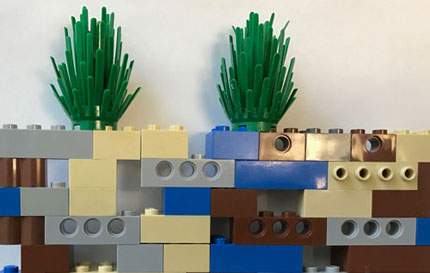Soil Science Society of America
5585 Guilford Road • Madison, WI 53711-5801 • 608-273-8080 • Fax 608-273-2021
www.soils.org
Twitter | Facebook
NEWS RELEASE
Contact: Hanna Jeske, Associate Director of Marketing and Brand Strategy, 608-268-3972, hjeske@sciencesocieties.org
Why is my soil so compacted?
May 1, 2017 – Compacted soil can be a tough problem to solve. The Soil Science Society of America (SSSA) May 1 Soils Matter blog post explains why soils become compacted, and what you can do about it.
 Loose, healthy soil is only about half-filled with solid materials, such as minerals and decaying organic matter. The other half is air and water. When soil is compressed, however, the balance is damaged—and that can mean trouble for plant and their roots.
Loose, healthy soil is only about half-filled with solid materials, such as minerals and decaying organic matter. The other half is air and water. When soil is compressed, however, the balance is damaged—and that can mean trouble for plant and their roots.
“There may not be adequate space for roots to properly penetrate the soil, which might prevent plants from taking in nutrients and water,” says Andrea Basche, soil scientist and Kendall Fellow, Food and Environment Program, Union of Concerned Scientists. “It could also mean that rainwater or irrigation water is less likely to enter the soil.”
While gardeners may be tempted to plow or rototill, this may add to the problem long-term. “Experts agree that any activities that put pressure on the soil surface should be kept to a minimum,” Basche states. “Excessive plowing in a garden can also reduce organic matter. So, too much plowing can dig your soil into a deeper hole – pun intended – where you have a negative cycle of declining soil structure and a smaller organic fraction.”
Instead, Basche suggests using compost and cover crops as part of the solution for compacted soils. This will activate the natural, biological processes of healthy soil. “Reducing the compaction in your soil will help with the long-term health of your soil, the animals that live in it, and your plants!” Basche says.
To read the entire blog, visit http://soilsmatter.wordpress.com.
Follow SSSA on Facebook at https://www.facebook.com/SSSA.soils, Twitter at SSSA_Soils. SSSA has soils information on www.soils.org/discover-soils, for teachers at www.soils4teachers.org, and for students through 12th grade, www.soils4kids.org.